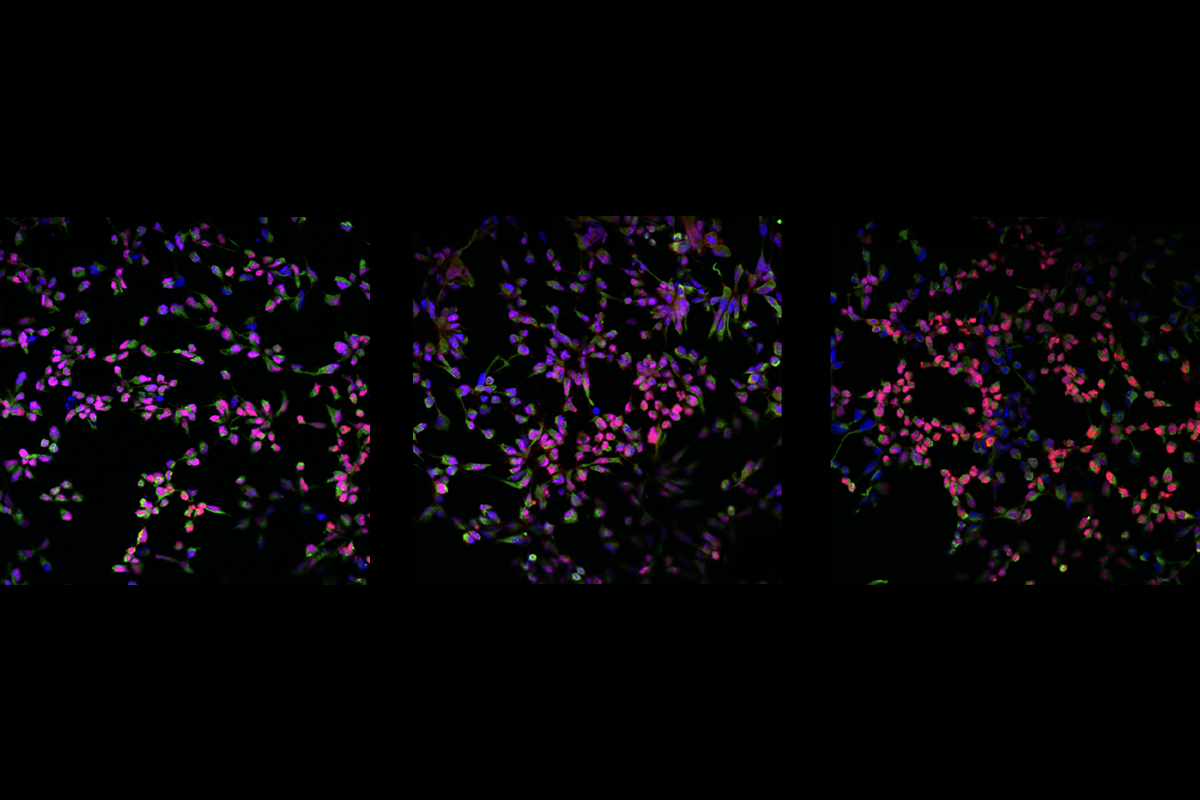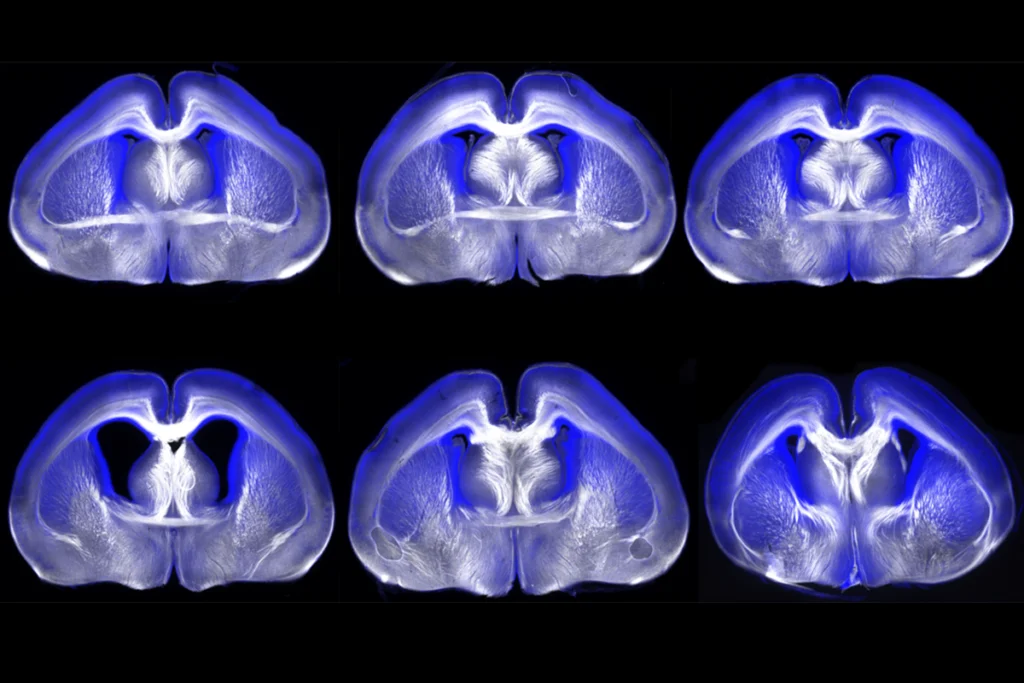Dialing down the expression of 17 different genes with strong ties to autism alters the pace at which some excitatory neurons develop, according to a new preprint. These perturbations can produce overlapping outcomes for proteins that attach to RNA and for the structure and function of microtubules, key components of a cell’s skeleton.
The findings solidify the idea that neurogenesis, RNA binding and microtubule biology are points of convergence by which autism-linked mutations affect brain activity, says co-lead investigator Nawei Sun, a former postdoctoral researcher in Jeremy Willsey’s lab at the University of California, San Francisco.
Scientists have identified more than 100 genes strongly linked to autism, a small subset of which share a role in neurogenesis, particularly in the growth and development of neurons that send excitatory signals. But how mutations in the broader pool of “high-confidence” autism-linked genes shape the early development of brain cells remains unknown.
In the new work, the researchers lowered the expression of dozens of individual autism-linked genes in neural progenitor cells grown in a dish, in an effort to identify convergent pathways likely implicated in autism.
“This is really heroic work,” says Illana Gozes, professor emerita of clinical biochemistry at Tel Aviv University, who was not involved in the study. Finding shared pathways and mechanisms across different neurodevelopmental conditions could ultimately lead to treatment targets that work more broadly, she says. “If we want to treat autism, we should see the whole picture.”
A
mong 87 high-confidence autism-linked genes, 17 shifted the developmental trajectories of neurons when knocked down, the study found. More specifically, for 10 of the genes, reducing expression accelerated differentiation, and for 7 of the genes it slowed differentiation and increased proliferation.For example, repressing the gene NSD1, which when mutated in people leads to larger-than-average head size and intellectual disability, slowed differentiation trajectories and sped up proliferation rates. Dampening the levels of TRIP12, which has been linked to intellectual disability, language delay and autism, on the other hand, reduced proliferation.
Gene knockdowns associated with lowered neuronal differentiation were also tied to an abnormally small head size, the researchers found. Cells lacking any of the 17 autism genes showed altered expression levels of more than 2,500 other genes.
Of these differentially expressed genes, 286 increased or decreased their expression depending on whether the knocked-down autism genes hastened or slowed a neuron’s developmental trajectory. Most of the genes showed increased expression in knockdowns that boosted differentiation and reduced expression in knockdowns that curbed it.
Many of the differentially expressed genes, the researchers found, are tied to neurogenesis and the binding of RNA; the tubulin proteins that form microtubules; and actin, another key cytoskeletal protein linked to autism. The team posted their findings on the preprint server bioRxiv in January.
T
he findings pinpoint autism-linked genes that have converging effects on brain growth and function via fundamental mechanisms, such as the regulation of the cell’s internal scaffolding, Gozes says. In 2022, she and her team showed that ADNP, which is among the 17 genes studied in the new work, interacts with the autism-linked gene SHANK3 to regulate the cytoskeleton. Mutations in ADNP cause a syndrome characterized by autism, intellectual disability, distinctive facial features and low muscle tone.Some autism-linked genes help cells form microtubules, a study published last year suggested. Because they influence key developmental processes, such as cell division and proliferation, “microtubules are really important for brain development,” Gozes says. “Without this scaffold, you won’t have a brain.”
Autism genes also affect brain development through the activity of RNA-binding proteins, the new analysis suggests. These proteins help regulate protein production at synapses in the brain and are also involved in RNA splicing — a process through which a gene’s transcripts are cut and reassembled to make different proteins.
RNA splicing is particularly important during neurogenesis, says co-lead investigator Noam Teyssier, a graduate student in Martin Kampmann’s lab at the University of California, San Francisco. “The fact that we see dysregulation of RNA-binding proteins as a convergent phenotype hints that there may be a dysregulation of splicing,” he says.
“It’s really nice to see more large-scale analyses of autism genes in parallel,” says Ellen Hoffman, associate professor in the Child Study Center at Yale University, who wasn’t involved in the work. “This [study] lays the groundwork for understanding more about how disruptions of these genes affect brain development.”
In the future, she adds, it would be important to investigate how the genes influence the development of other neural cell types, and how perturbations in their expression affect brain circuits and behavior.



